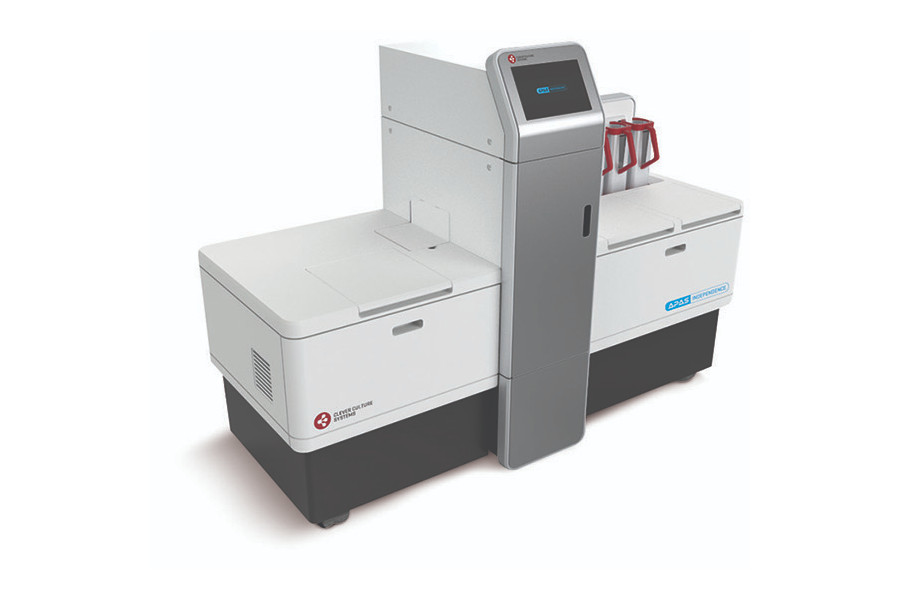We use cookies to give you a better experience on our website. Learn more about how we use cookies and how you can select your preferences.
LBT Innovations – Using AI to automate microbiology and clinical microbiology for faster diagnoses

LBT Innovations’ APAS® Independence helps reduce microbiologists’ workloads and improve treatment for patients.
Company Profile
Company: LBT Innovations
Sector: Medical Device Manufacturing
Location: Adelaide, South Australia
Profile: LBT Innovations is a designer of cutting-edge medical technology. It has produced a ground-breaking tool that analyses microbiological specimens, speeding up workflows for microbiologists and improving treatment for patients.
Why R&D is needed
Traditional laboratory processes for preparing and analysing culture plates is time-consuming. Microbiologists manually examine each specimen and separate those that need further attention.
This takes up a lot of critical resources. Meanwhile, doctors and patients have to wait a long time for results. The problem is worse in countries where microbiologists are in short supply.
LBT Innovations is working to solve this problem. Since 2006, it has invested $30 million in research and development. During that time, it has produced two main products.
Its first product, Microstreak, automates the process of applying a specimen to a culture plate.
Its second product, the automated plate assessment system instrument, automatically screens, reads and sorts these plates. Also known as the APAS® Independence, this instrument frees up a lot of time for laboratories and microbiologists.
Both the Microstreak and APAS® Independence speed up medical diagnoses, leading to better treatment of patients.
Ray Ridge, CFO of LBT Innovations, says the company's technology is revolutionary.
“Our technology doesn't replace microbiologists, but allows them to focus on the positives. For example, urine samples are on average 90% negative. Our technology recognises the negative samples and sidelines the positive and potentially positive ones so that scientists can concentrate on those,” he said.
The company's technology can read plates three times quicker than a human can. The technology also reads plates with greater consistency and sensitivity.
“The software we use learns to recognise where there is no or insignificant growth. The machine learning is very complex, based on thousands of images...and there's a separate analysis module for each specimen type.”
Scientists at St Vincent's Hospital in Melbourne recently studied the APAS® Independence. In the study, microbiologists looked at the same 3000+ culture plates as the instrument.
“Feedback confirms that the instrument is as accurate as we expected and created the efficiencies we thought it would.” Mr Ridge said.
Following a clinical trial involving 10,000 patients, APAS® technology is now FDA approved in the United States.
“We have the only technology like this in the world. We've an opportunity. It's exciting. We can immediately extend this to other plate assessment application. There are 13,000 labs globally with sufficient through-put to warrant automation. It's a large market,” Mr Ridge said.
How the Research and Development Tax Incentive helps
Mr Ridge said that, since being part of the R&DTI program, his company’s R&D budget has grown by about 50%. Now, his company invests about 90% of its budget into R&D.
“We're about 95% of the way through our R&D for the initial APAS product…but there's additional opportunity to reinvest in research to extend the application of this market leading technology into additional specimen types and into the culture plate processes such as agriculture, specifically looking at water and diary screening.”
Mr Ridge said the R&DTI has also enabled his company to hire eight new staff members. These include software and AI specialists, statisticians, microbiologists and specialists in medical compliance requirements.
“The R&DTI allows us to bring our capability in-house.”
LBT Innovations’ new hires bring more knowledge to Australia and to Australian institutions such as Adelaide University and the Australian Centre for Visual Technologies.
LBT Innovations’ R&D has also helped the Australian economy, because it hired a Melbourne-based manufacturing company to provide design and engineering services for APAS® Independence.
The R&DTI has also helped LBT Innovations to invest in its product through a partnership with joint venture company Clever Culture Systems AG.
“Labs around the world are under pressure to deliver more with limited budgets and fewer resources. The APAS instrument optimises use of specialised human resources, which transforms culture plate processes.”
In the future, the company hopes to develop software that will study wounds and wound-care over time.
“The potential is significant…We're a technology market leader and expanding our product pipeline based on the core AI technology platform,” Mr Ridge said.
We have the only technology like this in the world. We've an opportunity. It's exciting. We can immediately extend this to other plate assessment application. There are 13,000 labs globally with sufficient through-put to warrant automation. It's a large market.
R&DTI Impact Facts
- Over $30 million invested in R&D since 2006
- R&D budget has grown about 50%
- Helped hire eight new staff and bring knowledge in-house
- Sped up sale of product
- Speeds up diagnosis of lab specimens, leading to faster results and better patient treatment
- Increased employment via Australian-manufacturing contracts
- Partnerships with Adelaide University